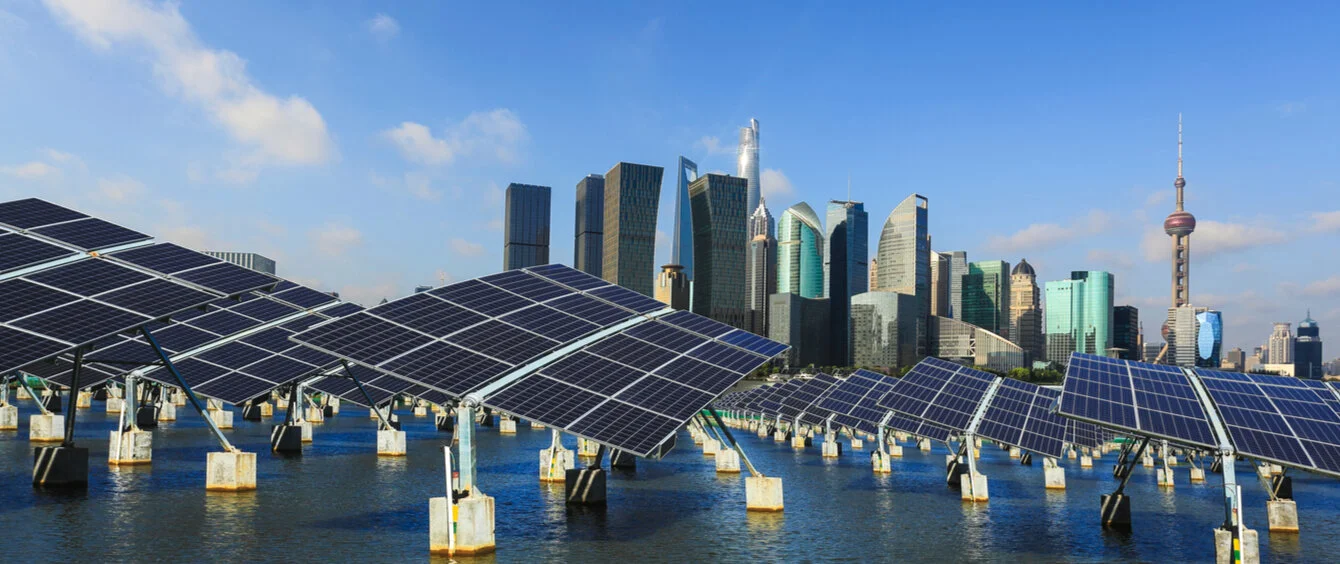The Covid-19 pandemic dominated the news in 2020, but the year also saw an event which should have huge positive long-term impacts in the fight against climate change – China’s commitment to carbon neutrality by 2060, announced by President Xi Jinping to the UN general assembly in September.
On the face of it a carbon neutral target ten years behind those adopted by the EU and UK may seem relatively unambitious, but it is not. When China’s size, level of economic development and dependency on fossil fuels, particularly coal, are considered, it is one of, if not the, most ambitious climate change goals in the world. Not only that, but it heralds the more global adoption of carbon neutrality targets, without which the aims of the Paris Treaty on Climate Change cannot be met. China has a population of over 1.4 billion people, 18.5% of the world total, and is the largest emitter of GHG emissions by country. However, on a per capita basis each Chinese citizen emits less than half those of more developed countries such as the United States, and China cumulatively has emitted fewer GHG emissions than either the US or EU.
Coal dependency
Central to China’s overall high level of emissions is its massive use of coal, which in energy terms amounted to 81.67 exajoules in 2019, representing more than half of the world’s total coal consumption. China has drawn on its abundant coal resources and imports to fuel its rapid industrialisation over the last 30 years, which has seen incomes rise, rapid growth in the economy’s energy consumption and massive social change as workers have migrated to urban areas, in the process creating 27 of the world’s 100 largest cities.
As a result, the challenge of weaning China off coal, let alone addressing 14 million b/d of oil consumption (second after the US) and 307 billion cubic meters of gas a year (third after the US and Russia) in just 40 years is formidable to say the least.
Manufacturing capacity
However, China has a huge resource on its side – its manufacturing capacity. The technologies at the core of the energy transition require natural resources and energy to be built, but do not depend on the ongoing consumption of fossil fuels. This means they are less dependent on fossil fuel extraction and more on the transformation of natural resources into the machinery that can produce and use energy on a sustainable basis.
This requires manufacturing capacity. Solar panels, wind turbines, batteries and even electrolysers to produce hydrogen all have to be produced on a massive scale. Mass production is also the key to reducing costs. Photovoltaic solar power is a prime example where hugely expanded manufacturing capacity has led to what the International Energy Agency describes as some of the cheapest power every produced.
China has played no small part in this. In 2019, the country accounted for 73% of the world’s solar cell and module production.
China's energy generation mix
Source: BP Statistical Review of World Energy (2020)The significance of this manufacturing capacity goes beyond the simple making of goods. In a fossil fuel world, critical international supply chains are based around access to oil, gas and coal resources. In a carbon neutral world, where more power is supplied domestically by renewable energy sources, supply chains will be based around the supply of raw materials to original equipment manufacturers.
Green leader
If China comes top of or near the top of the list in terms of fossil fuel consumption, it also heads the field when it comes to renewable energy production. It is number one in hydroelectric power, solar generation and wind, generating respectively 30%, 31% and 28% of the world totals. It is also one of the few countries in the world to have an active newbuild programme for nuclear power.
It has taken a lead in the electric mobility revolution, hosting more electric cars than the rest of the world put together. In 2019, 1.06 million electric cars were sold in China, compared with 560,000 in Europe and 326,000 in the US. China has more than 95% of the world’s electric buses and seemingly countless two-wheeled electric scooters – 22.7 million were sold in the country in 2018.
New policy path
Yet the challenge facing China in terms of delivering carbon neutrality is unquestionably huge. Like the EU countries and the UK, having now set the destination, Beijing must chart the path that will lead to its goal. In March 2021, the Chinese government will unveil the full text of its 14th Five-Year Plan (FYP), its most important policy framework document. However, the fifth plenum of the Central Committee of the Chinese Communist Party, held from October 26-29, 2020, saw the release of two blueprints – the 14th FYP (2021-25) and a 2035 vision (2021-2035), as well as an economic development strategy known as the Dual Circulation Policy, which was first presented by President Xi in May.
These documents provide indications as to what the full 14th FYP will contain. While many themes are consistent with former FYPs there is a shift towards the prioritisation of innovation and advanced manufacturing, alongside stimulating domestic demand and self-sufficiency to make the economy more resilient to external shocks.
Moreover, ‘greenness’ is one of five key development concepts. The 14th FYP is expected to include support in a number of environmental areas such as green finance, innovation, green buildings and the transformation of key industries, alongside the safe and efficient use of low carbon energy, setting China on the path towards its interim goal of peak emissions in 2030 followed by carbon neutrality in 2060.
